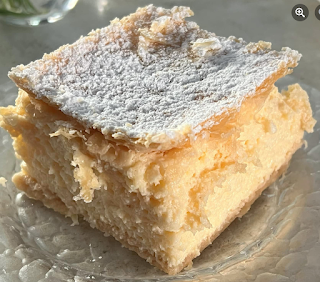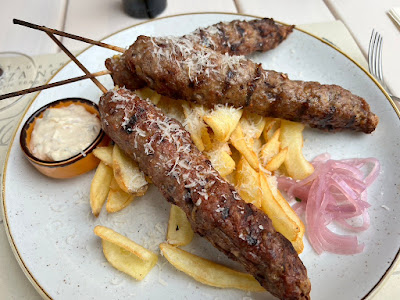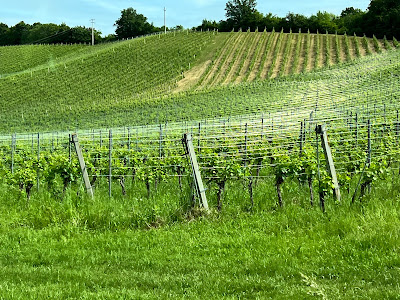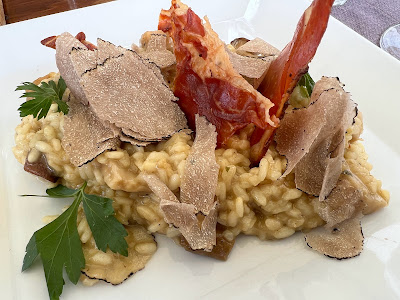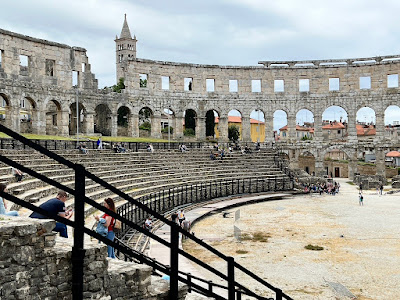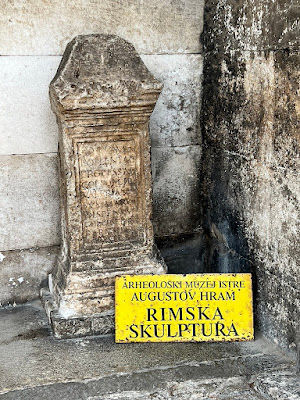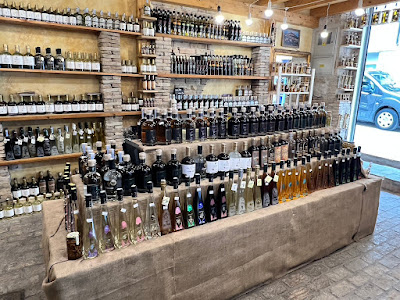Wine is integral to the culture of Croatia, and they consume much of what they produce, exporting only about 6% of their total production. In addition, they import about four times as much wine as they export, as they obviously desire even more wine to drink. Indicative of their great love for wine, Croatians drink about 22 liters of wine per capita, making them the third largest consumer in the world.
The history of wine in the region of Croatia extends back about 2500 years, even before the time of the ancient Greeks colonists, but its modern wine industry is relatively young, still recovering from when they achieved their independence from Yugoslavia in 1995. The Croatian wine industry has accomplished much in the past approximately 25 years, and they are currently producing plenty of excellent wines, and have much potential. Although Croatia has become a hugely popular tourist destination, its wines still need much more recognition around the world.
Croatian wines, primarily Dalmatian wines, were first exported to the U.S. over 140 years ago. Currently, based on some of the latest statistics I have seen, Croatian wine exports to the U.S. are small, generally under 10,000 cases annually, but that is slowly changing. Thus, it's likely difficult for many people to find Croatian wines at their local wine store, but you should ask them to carry some.
Prior to my first journey to the
Republic of Croatia, to the region of
Dalmatia, in September 2019, I had little familiarity with Croatian wines, having previously tasted only a couple, though I enjoyed those I did. During my visit, I had the opportunity to taste close to 150 Croatian wines, and I found many reasons to enjoy these fascinating, diverse and delicious wines. After that trip, I continued to taste other Croatian wines as well.
In May/June 2022, I made my second visit to Croatia, exploring Dalmatia, Slavonia and Istria, touring 28 wineries and tasting about 350 wines, as well as some Croatian spirits and liqueurs. Overall, I've now tasted approximately 600 different Croatian wines, so I have a very good foundation for understanding these wines. It's clear to me that all wine lovers, no matter what their preferences, will find something to love in Croatian wines.
Let me provide you a list of
Ten Reasons (actually Eleven) why you should experience and drink Croatian wines, why you should seek out these compelling wines. I often encourage people to be adventurous with their palates and I'm doing so again, asking you to sample Croatian wines, to give them a chance. Once you taste them, I strongly suspect you'll understand why I find them to be so compelling and you will become a convert as well.
In addition, if you desire more information about Croatia and their wines, if you want specific wine reviews, check out my compilation page,
All About Croatia. That page has links to over 80 articles I've written about Croatia, covering wine to travel, food to history. And if you have any specific questions about Croatian wines, feel free to email or message me.
Now, onto the
Ten Reasons To Drink Croatian Wine.....
First, Croatian wine has a lengthy and fascinating history.
Wine making in Croatia extends back at least 2,500 years, prior to even Greek colonization, and wine was an integral element of ancient Croatian civilization.
Agatharchides of Cnidus, a Greek historian and geographer from the 2nd century BC, claimed that the best wine in the world was from
Vis, a Croatian island in the Adriatic Sea that had been settled by the Greeks. The
Stari Grad Plain, on the island of
Hvar, was colonized by Greeks during the 4th century B.C. Vineyards have been continuously planted here for over 2400 consecutive years and it's now a
UNESCO World Heritage site. Ancient Romans contributed significantly to wine production in Croatia.
Over the centuries, Croatia has also been invaded numerous times, by various conquering nations, yet they have somehow always found a way to continue their traditions of viniculture. In addition, some of the 130 or so indigenous grapes of Croatia may have even been around since the days of ancient Greece. Thus, each sip of Croatian wine brings with it a sense of history, a connection to the ancient past. Their modern wine industry may be young, but its roots extend back over two millennia.
Second, Croatia has many unique, indigenous grapes.
There are over 130 indigenous grapes in Croatia, though only about 40 are used regularly on a commercial basis. White grapes such as
Bogdanuša, Debit, Graševina, Grk, Malvazija Istarska, Malvasia Dubrovačk, Maraština, Pošip, and
Vugava. Red grapes like
Babić, Dobričić, Plavac Mali, Teran, and
Tribidag. They present unique flavors and aromas, though commonly offering some familiarity. Different regions showcase different grapes, such as
Dalmatia (the home of
Plavac Mali and
Pošip), Slavonia (where
Graševina dominates), and
Istria (the home of
Malvazija Istarska and
Teran).
I've had the opportunity to taste many of their indigenous grapes, and have been impressed. Any wine lover seeking to broaden their palate, to experience something new, should seek out such unusual grapes which are often found only in Croatian wines. You never know when you might find a new favorite grape. I love exploring unusual grapes and Croatian wines allow me to further enhance my experiences.
Third, Croatian grows international grapes as well. Besides their native grapes, Croatia grows a wide variety of other grapes as well, including the most popular international grapes (from Cabernet Sauvignon to Chardonnay). Many regions grow these international grapes to appeal to a certain consumer segment who prefers to drink only what they know. Although I prefer Croatian wines produced from native grapes, I found numerous examples of excellent wines made from non-native grapes, especially Pinot Noir, Cabernet Franc and Riesling.
In addition, in Croatia you can find some less common grapes from Italy, Austria, and elsewhere. For example, in Slavonia,
Blaufränkisch is known as
Frankovka, and produces delicious Rosé and Red wines. At
Pink Day, a large Rosé tasting event, The Frankovka Rosé really impressed me. You can also find Austrian grapes in Croatia such as
Rotgipfler (known as
Zelenac) and
Roter Veltliner. You can even find Italian
Nebbiolo in Croatia! A number of winemakers have been experimenting with a variety of grapes from other countries, seeking which ones perform best in Croatian soil.
Fourth, you're probably already familiar with one important Croatian grape.
In Croatia, where the grape originated, it's known as
Crljenak Kaštelanski,
Pribidrag, and
Tribidag. However, the grape has traveled from its place of origin, and in
Italy it became known as
Primitivo while in
California it became known as
Zinfandel. Yes, Zinfandel which is often seen as an "All American" grape, actually originated in Croatia!
It wasn't until 2001 that DNA testing confirmed these facts, though many had long suspected a Croatian connection. Within Croatia,
Tribidag, which derives from Greek words meaning "
early ripening," was first mentioned as early as the 15th century. Tribidag has been seeing a renewed renaissance within Croatia, especially in Dalmatia, and more and more wineries are starting to produce wines from this grape. Wouldn't you love to try a wine made from the original "Zinfandel?"
Fifth, Croatian wines are diverse.
Croatian wineries produce a myriad of different types of wines, including
Sparkling, White, Skin-Contact Whites, Rosé, Red, Amphora, Amarone-Style, Dessert wines and more. These wines come in a wide variety of flavor profiles and styles so there is something available to appeal to any personal preference. You'll find plenty of easy drinking wines as well as more serious and complex wines, and so much more between these two. You'll also find some ultra-geeky and experimental wines, which will tantalize your mind and palate.
In addition, there are a number of different terroirs in Croatia which further leads to the diversity in their wines. I had the opportunity to sample so many of these different styles of wine, and they were comparable in quality to wines from all over the world. For example, some of their Sparkling Wines will remind you of Champagne while some of their Amber wines are as good as any found in Georgia or elsewhere. Croatian wines are multi-dimensional and there is much to discover in that multitude. No matter what kind of wine you enjoy, you'll find a Croatian wine that will satisfy you and might even become a new favorite.
Sixth, Croatian wines can age well.
Most wine, from anywhere in the world, is not produced to be aged, and most consumers drink their wine within days of its purchase. However, some wines can age quite well, sitting in your cellar for years, slowly evolving over time. That aging potential is one of the reasons that certain grapes, like Cabernet Sauvignon, Chardonnay, and Nebbiolo, are so revered. Such wines evolve over time, acquiring different aromas and flavors from when they are first bottled. It can be an amazing experience to taste a wine at different aspects in its evolution, over the course of a number of years.
In Croatia, some of their native grapes possess that potential as well, such as red grapes like Plavac Mali, Teran, Tribidag, and Babić, and white grapes like Graševina, Malvazija Istarska, and Pošip. I've tasted stellar examples of these wines, including some older vintages, which were created to be age-worthy. Some wineries had wines in their cellar that were produced in the 1940s, and which were still drinkable. Croatia can make serious, age-worthy wines which will impress.
Seventh, Croatian wines are made for food.
As Croatian wine is such an integral aspect of their culture, it is obviously a natural pairing for food, possessing a versatility that extends into many cuisines. Croatians commonly drink wine with food so it is produced specifically to be accompanied by food. At basically every wine tasting I went to in Croatia, food was offered with the wine. If you purchase a Croatian wine, you can be almost assured that it will pair well with some type of food. Dependent on the type of food, there is also probably a type of Croatian wine which will work well with that dish, from seafood to steak, pasta to chicken.
For example, you could enjoy an easy drinking Plavac Mali or Teran with a burger or pizza, or a more powerful Plavac Mali or Teran with a ribeye steak. You could enjoy a Pošip or Graševina, with raw oysters or fried haddock. Croatian cuisine is diverse, from pasta and truffles in Istria to fresh seafood in Dalmatia, and so is their need for diverse wines to accompany their different foods. The wines of each region pair wonderfully with the local cuisine.
Eighth, buying Croatian wines improves lives.
As I've written previously, it can be important to be a
Wine Activist.
Peter Weltman, a sommelier and writer in San Francisco, summed it up well by writing, "
With our wine purchases, I believe, we can help advance regional peace, provide support for farmers in war-torn regions, have a voice in geopolitics, and aid in economic recoveries." In addition, he stated, "
Wine transcends borders and bridges cultures, and it can be used to improve lives if we make the right purchases."
It's only been about 25 years since Croatia prevailed in a terrible war, and attained its independence. Its young wine industry certainly needs support, as does the entire country, and buying Croatian wines is one way to help them. It's probably not something you normally think about when buying a bottle of wine. but maybe you should consider it more often. Buy Croatian wine, give your support to Croatia and drink some excellent wine. Everyone wins.
Ninth, nearly everyone will enjoy Croatian wines.
There is no reason why anyone couldn't find a Croatian wine that they enjoy. Many of their wines are often easy drinking, absent of strange and off-putting flavors. They will seem familiar in some respects, with just enough pleasant differences to make them intriguing. The main reason Croatian wines don't sell as well as they should is due to lack of availability and unfamiliarity. Most consumers, and many wine shop owners, know little about Croatian wines so they gravitate instead to what they already know. That can be overcome with greater education and more tastings. People need to be shown they are missing out on Croatian wines.
Tenth, and most importantly, Croatian wines are delicious.
It's a simple thought but sometimes gets forgotten amidst everything else. In the end, the most significant aspect of wine is that it tastes good. No matter what else a wine has going for it, if it does not taste good then it has failed. I have tasted many well-produced Croatian wines, of all types, and at the root of it all, they are delicious. I may appreciate Croatian wines for many different reasons, but first and foremost, taste remains the most compelling reason to drink Croatian wines. No matter what your level of wine knowledge, I think we can all agree that first and foremost, a wine needs to taste good. On that level, Croatian wines deliver.
And here's a bonus reason to embrace Croatian wine!
Eleventh,
Croatian wines are also used to make intriguing spirits and liqueurs.
Croatian has a lengthy history of
Rakija (Croatian brandy) production, which is made from a wide variety of different wines, fruits, herbs, and botanicals. Home production used to be very common, and some Croatians still make their own at home. When a guest comes to a Croatia home, it's a tradition to offer them Rakija. Rakija can be delicious, and the wide variety of different flavors make it a versatile product as well.
There are a number of other intriguing wine-based drinks in Croatia. For example, Bermet is an interesting and tasty aromatized wine, flavored with wormwood and other ingredients. It is reminiscent in some ways to Vermouth. but is its own special alcohol. Istrian Epulon is another wine and wormwood flavored liqueur, while Istrian Teranino is a liqueur made from Teran wine. All of these are even harder to find in the U.S. rather than Croatian wine, but are well worth seeking out.
So, are you convinced to give Croatian wines a try? I hope so. However, if not, why not?








